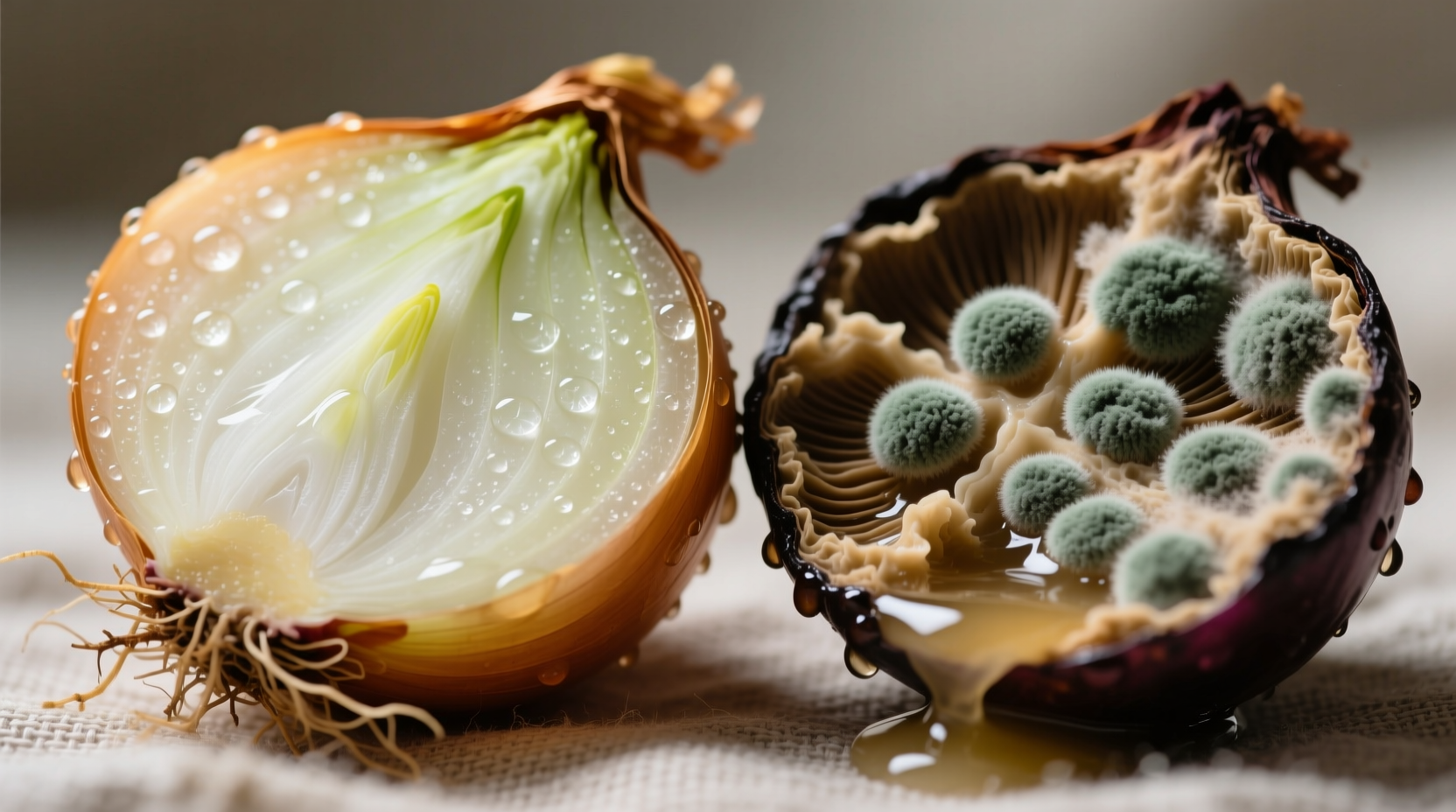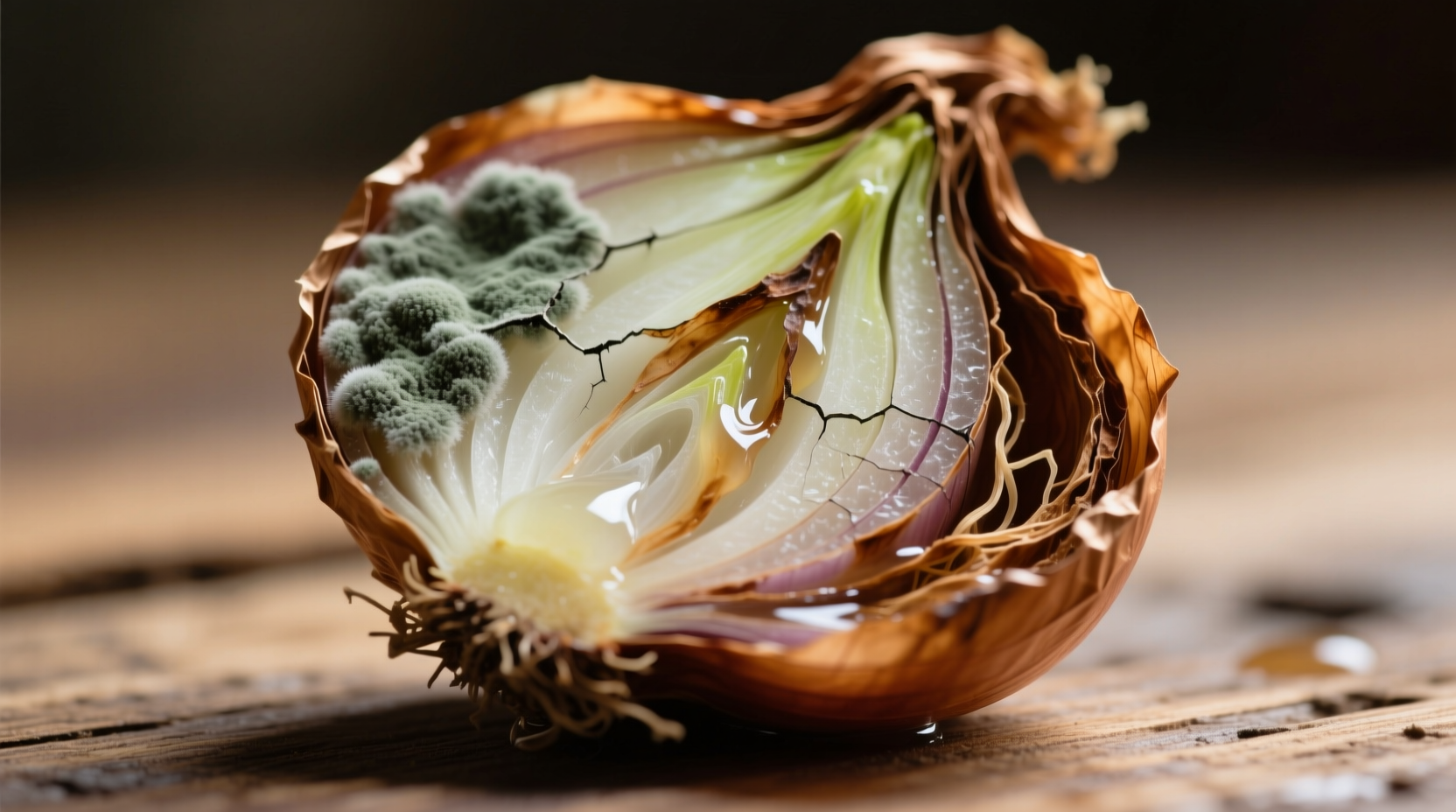A rotten onion shows clear signs of spoilage including soft spots, mold growth, unpleasant odor, slimy texture, and discoloration. When properly stored, fresh onions last 2-3 months at room temperature or 6-8 months in cool, dark conditions. Never consume onions with significant mold growth or slimy texture as they can harbor harmful bacteria.

How to Identify a Rotten Onion: Your Complete Guide
Discovering spoiled produce in your kitchen pantry can be frustrating and potentially hazardous. Understanding exactly how to identify a rotten onion helps prevent food waste while keeping your family safe. This comprehensive guide provides practical, science-backed information to help you determine onion freshness with confidence.
Immediate Warning Signs of Onion Spoilage
When checking your onion supply, look for these unmistakable indicators that your onion has gone bad:
- Visible mold growth - fuzzy white, green, or black spots
- Soft, mushy areas - particularly at the root or neck end
- Unpleasant odor - sour, musty, or generally off-putting smell
- Slime or liquid - moisture seeping from the layers
- Discoloration - yellow, brown, or black spots beyond normal skin color
- Sprouting - while not immediately dangerous, indicates aging
| Characteristic | Fresh Onion | Rotten Onion |
|---|---|---|
| Texture | Firm, crisp layers | Soft spots, slimy layers |
| Smell | Mild, characteristic onion scent | Strong sour or musty odor |
| Appearance | Dry, papery skin | Mold, discoloration, moisture |
| Weight | Firm and heavy for size | Lighter due to moisture loss |
The Science Behind Onion Rot: What Actually Happens
Onions rot due to natural enzymatic processes and microbial activity. According to the USDA Agricultural Research Service, the primary causes of onion spoilage include:
- Bacterial soft rot - caused by Pectobacterium carotovorum bacteria breaking down pectin in cell walls
- Fungal growth - particularly Aspergillus and Penicillium species thriving in moist conditions
- Moisture exposure - accelerates enzymatic browning and microbial growth
- Temperature fluctuations - promotes condensation inside storage containers
The University of California Cooperative Extension explains that onions contain natural sugars and moisture that, when exposed to air through cuts or damaged skin, create ideal conditions for spoilage organisms to multiply rapidly.
Onion Spoilage Timeline: From Fresh to Rotten
Understanding how quickly onions deteriorate helps prevent food waste. This timeline shows the typical progression of onion spoilage under various storage conditions:
- Days 1-7: Fresh onion stored properly shows no visible changes
- Days 7-14: Outer skin may become slightly papery; minor sprouting may begin
- Days 14-21: First signs of softening at root end; possible faint odor
- Days 21-30: Visible soft spots develop; moisture may appear between layers
- Days 30-45: Significant discoloration; mold growth becomes visible
- Days 45+: Complete spoilage with extensive mold, slime, and foul odor
This timeline varies based on storage conditions, with refrigeration extending freshness by 2-3 weeks compared to room temperature storage, according to FDA food safety guidelines.
When Is a Slightly Rotten Onion Still Safe to Eat?
Not all signs of spoilage mean immediate disposal. The National Center for Home Food Preservation provides clear guidelines for determining when you can safely salvage part of an onion:
- Safe to salvage: Remove 1-inch around small soft spots with no mold
- Safe to salvage: Peel away outer layers with minor discoloration
- Discard immediately: Any onion with visible mold growth
- Discard immediately: Onions with slimy texture or foul odor
- Discard immediately: Onions showing signs of bacterial soft rot
Remember that mold on onions can penetrate deeper than visible growth suggests. The USDA Food Safety and Inspection Service warns that "mold can produce harmful mycotoxins that may spread throughout soft foods like onions, even if not visible."
Proper Onion Storage Techniques to Prevent Rot
Extending your onions' shelf life requires understanding their specific storage needs. Professional chefs and food scientists recommend these evidence-based storage methods:
- Ventilated containers - Use mesh bags or baskets instead of plastic bags
- Cool, dark environment - Ideal storage temperature: 45-55°F (7-13°C)
- Low humidity - Relative humidity of 65-70% prevents moisture buildup
- Separate from potatoes - Potatoes release moisture and ethylene gas that accelerate onion spoilage
- Check regularly - Remove any showing early spoilage signs to protect others
The University of Minnesota Extension confirms that properly stored onions maintain quality for 2-3 months at room temperature, while cured onions stored in ideal conditions can last 6-8 months.
Creative Ways to Use Onions Before They Go Bad
When you notice your onions approaching their prime, these professional chef techniques help maximize their usability:
- Quick pickle - Extend shelf life by 2-3 weeks with vinegar solution
- Dehydrate - Create long-lasting onion powder from slightly soft onions
- Freeze - Chop and freeze for cooking (texture changes but flavor remains)
- Make onion jam - Transform aging onions into a delicious condiment
- Infuse oils - Extract flavor from onions before they spoil completely
Remember that cooking does not eliminate all potential toxins from significantly spoiled onions. The FDA advises discarding any onion showing advanced spoilage signs regardless of intended use.











 浙公网安备
33010002000092号
浙公网安备
33010002000092号 浙B2-20120091-4
浙B2-20120091-4